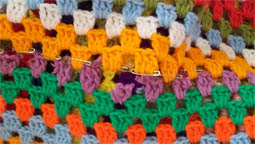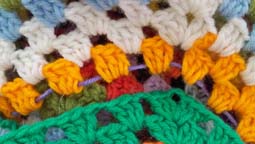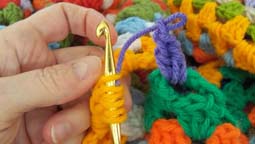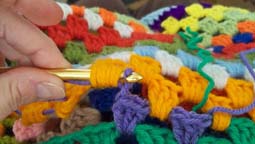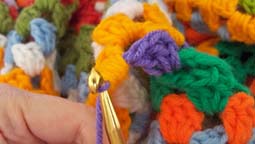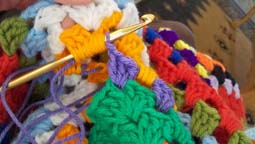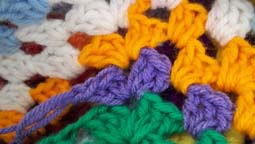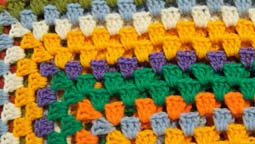If you’ve never blocked your crochet projects after you finish them, you’ll be amazed at what a difference it can make! It’s almost like night and day! For a professional look, this is how I block my crochet projects:
You will need a blocking board to pin the edges of your crochet pieces to the right size. My blocking board is a 4 foot square piece of pink foam which is used in homes for insulation or under stucco. It retails for approx $20 for a 4 x 8 foot piece (I split a 4 x 8 foot piece with a friend). Use a permanent black marker and yardstick to draw lines on the board (I spaced my lines 2” apart in both directions). If you plan to block anything round, also draw some circles on your board, using anything you can find that’s round (like the lid of a pot or pan). Next, cover the board with plastic wrap, overlapping the plastic strips and pinning the edges of the plastic wrap to the edges of the board.
There are many ways to block your crochet. One of them is to immerse your crochet piece in tepid water for 10-20 minutes (if the yarn label says you can wet block it, of course!), then gently squeeze out the excess water (do not twist or wring) and pin it to your blocking board.
Another way is to pin the piece directly onto the blocking board (to the desired measurements) while it is still dry and spray it with water until it is all wet.
IMPORTANT: Only use rust-proof (stainless steel) pins for blocking.
Allow plenty of time to adequately pin the edges of your crochet pieces to the proper measurements on the board (if your piece has lots of picots around the edges, this can be time consuming). Allow your crochet piece to dry thoroughly before removing the pins. In some areas, it may take up to 24 hours for your crochet piece to dry completely before removing it from the blocking board. To help speed the drying process, try using a ceiling fan or box fan to move the air around more in the room!
In the end, your effort will pay off with a professionally blocked crochet project!


